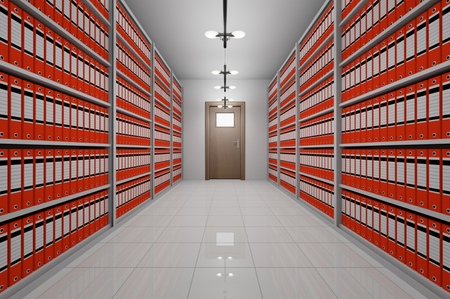Originally published on October 11, 2011 in our free BigLaw newsletter. Instead of reading BigLaw here after the fact, sign up now to receive future issues in realtime.
Does your email archiving solution leave you wanting more? Tired of dealing with an Outlook plug-in that doesn't play nice? With archived email and attachments that are sometimes available and sometimes not (usually when you need them the most … like in a client meeting)? With the need to perform two separate searches, often via two different interfaces, to search your "live" email and your archived email?
On the administrative side, are you tired of backing up two separate environments, administering your email archive through a separate admin console, possibly one without the most intuitive knobs, dials and levers for making it behave and perform?
Have you considered eliminating your third party archiving solution altogether, and implementing Exchange 2010's native Personal Archive?
The thought may seem daunting when you let yourself dwell on all of the problems you encountered implementing your third-party archiving solution in the first place, and when you extrapolate the problems you likely will have moving your messages to Exchange 2010's native archive. But there are a number of very sound reasons, from compliance, to recovered software licensing fees, to improved administrator and user experience, that merit serious consideration.
What Is Personal Archive and Why Should You Care?
Personal Archive is a new product name from Microsoft that is entirely unrelated to PST files. In fact, Exchange 2010 has tools for importing any old PST files you might have lying around. Also, Exchange 2010 Archiving requires an Exchange Enterprise Server License and Enterprise CALs sufficient for all user mailboxes using the technology.
Microsoft espouses the ability of native archiving to achieve compliance through the following means: "preservation, discovery, control, protection, reporting, and availability."
At first blush, it appears as though Exchange 2010's toolbox of features could go a fair way toward achieving compliance if used properly in the context of a business compliance policy and practice that is at least moderately disciplined. And yes — Microsoft is careful not to make too grandiose a set of claims about Exchange's native compliance-supporting features being a silver bullet/complete solution for all your compliance needs. But really, there's a lot here.
Some highlights of features that support compliance (and which provide general utility):
• Multi-Mailbox Search Support: Configurable through the use of roles to be a process which can be managed outside of IT.
• Support for Litigation/Legal Hold: Once applied, all items which are deleted are searchable/recoverable for the duration of the hold.
• Content Retention: The ability to specify retentions periods and rules for both production and archival message data which can be different or the same across both environments.
• Dynamic Email Signature Blocks: Often required for compliance (e.g., "this is not tax advice" and other such disclaimers) using data (including logos) stored in the Active Directory.
• Protection/Message Encryption: Transport Layer Security (TLS), Opportunistic TLS, integrated content filtering, SSL, and more.
• Auditing: Permits determination of whether users have access to and when they accessed certain email folders and messages. It can also report on any multi-mailbox searches that have been performed, etc.
• Built-in High Availability (HA): Functions provide for the reliability that many compliance standards require, saving your firm from the potential for costly fines and a loss of reputation in the event that critical discovery data is not recoverable.
User Benefits
And the top three user benefits are:
1. No Outlook plug-ins to crash.
2. All email messages (live or archived) are searchable via a single interface using Outlook or webmail.
3. Along with Exchange 2010's increase in the number of messages permissible in the critical Exchange folders (Inbox, Sent Items, Deleted Items), native archiving also eliminates the need for users manually to prune and file their aging messages. The personal archive automatically creates duplicate copies of a given user's mail folder structure within the archive, and moves older messages to the corresponding archive folder (moving anything older than two years to the archive by default, but configurable based upon your firm's business rules).
Administrator Benefits
And the top five administrator benefits are:
1. Simplification of email backups and improved tools for managing retention policies.
2. Simplification of email administration through consolidation of all email and archived email under a single, unified architecture.
3. Improved access to critical administrative functions related to ongoing maintenance, operations, and archiving via webmail.
4. The provision of a native, high availability solution that performs continuous replication of mailbox data ("live" and archival) from a production mail server environment to a backup mail server environment and that simplifies and automates failover of mail services and/or data on the fly.
5. The ability to store production mailbox data on high performance data storage devices (e.g., SANs with SSDs), and either or both backup HA and/or Personal Archive data on cheaper/lower performance disk — without losing any of the seamlessness of the HA solution or of the Personal Archive being always available alongside your live message store.
Well, Should You?
Yes. Exchange 2010's native archiving solution is ready to replace your third party email archiving solution. But is your firm willing — and prepared — to do what it takes to wrestle that costly and complicated monkey from its back?
Written by Matthew Berg, Director of IT at Wolf, Greenfield & Sacks, P.C..
How to Receive BigLaw
Many large firms have good reputations for their work and bad reputations as places to work. Why? Answering this question requires digging up some dirt, but we do with the best of intentions. Published first via email newsletter and later here on our blog, BigLaw analyzes the business practices, marketing strategies, and technologies used by the country's biggest law firms in an effort to unearth best and worst practices. The BigLaw newsletter is free so don't miss the next issue. Please subscribe now.










